When following the graphic score of Pithoprakta by Xenakis, along with the recording we can see that the piece is based on mathematical structures. In the graphical score, these structures looks very organic, as if the mathematical designs were drawn by hand. This is something very valuable when composing. If the strings were to enter one by one, orderly, we would see a straight line in the score (graphic or analog) bringing an extremely predictive musical behavior. It is important to break the straight lines of the design to achieve more organic shapes, and consequently a more organic listening. The score is still going to be schematic, but the structures will be as calculated as a tree can be, not a refrigerator. Pithoprakta is never reduced to ideal squared forms, which would be uninteresting for the ears.

The graphic notation that can be inferred from Pithoprakta is visually beautiful. The analog score has both musical and visual value.
When I “see” graphic scores by other composers, I experience different things:
- The score has nothing to do with the effect; it is randomly connected, usually in a very simplistic way. It seems to me that the performers do whatever they want. This could be worth doing. But usually not.
- The scores are very rigid, especially those that use graph paper. The music sounds like coming from a mechanical piano made from a roll inspired on a geometric delight without musical heart.

Xenakis´music is organized and visceral at the same time. And quoting the Greek (sorry for the easy association!), Xenakis breaks the commonplace conception of Apollo as an opposite of Dionysus. The guts of Dionysus and the arrow of Apollo converse. The warmth of wine, the dance, the beast come together with the intellectual distance, the direction, and predetermination of the archer. Gabriel Valverde, my composition teacher, used to say when talking about Xenakis: "An elephant has passed." An algorithmic elephant, I would say!
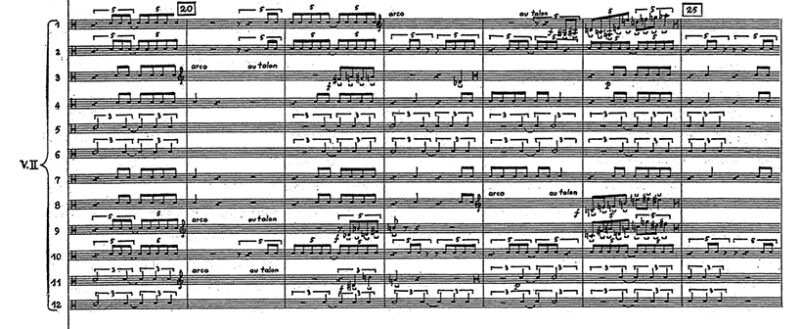
As a composer I am interested in the mathematical construction of organic forms. Not rooted literally in the heart of mathematics, but in its concept. There are many contemporary composers who work with mathematical organic forms derived from nature, with sonic results that are generally highly schematic. Especially in our century, where organic forms are closely related to ecological concerns, the translation of data into music seems to be done by pushing a square button without guts and also without premeditation. Xenakis was overall a musician, who, guts and brain, ultimately assigns the parameters and decides what each algorithm means in the realm of music. A monster with two heads.
Following this line of thinking, there is, however, a question about the mathematical structures in Xenakis's music related to his approach to musical form. In Pithoprakta, the different scenes succeed each other in blocks. These blocks are in dialogue with each other, like successive blocks of concrete (or other more fragile materials, like "blocks of gas" or "blocks of fluids"). Block, massive or ethereal are also melting into one another. But they are solid, concrete, clearly defined blocks. In the manner of Stravinsky, Gubaidulina, Ustvolskaya, Nono in his string quartet, and many others, the discourse in blocks attempts to disrupt centuries of a Western linear narrative discourse. Urgent matters in the mid-20th century.
I borrow the question of organic forms previously discussed in Pithoprakta, but now, applied to the general form of a piece. And also, bringing the use of organic mathematical forms in other aspects of the composition like sound structure and orchestration. Also into overall rhythmic organization, a complete new extensive chapter.
Somehow in my mind, unconsciously, an as unaware I could be of the influences of such a composition monster, I pay tribute to the beginning of Pithoprakta with my Música invisible for trombone, Water wonderfully played by Dalton Harris. In Water, I am using the rhythmical structures of water drops to create musical structures (listen with headphones please! the beginning is very soft).
I listen to Pithoprakta with nostalgia, like someone watching a Tarkovsky film. There is still so much to learn, but at the same time, it feels so far away, a blurry dot back then in the 20th century. Good old times.
Is there an artistic team, apart from yourself, who will write the libretto and / or the adaption of Camus’ novel?
Yes. I work in collaboration with:
1) Annette Müller: dramaturge and theater director. She works in different theater productions in Germany.
2) Bart Brouns: He is an expert in the German language with knowledge of French literature. He is also a musician.
Working with Annette Müller:
The dramaturgy of this opera follows the chronological storyline as in the novel (ex: the funeral, the beach, the prison, the trial). I don’t want to produce a new text based on Camus’ novel but I will use a solid selection of the existent text, which will be the basic structure for my new work.
“On the surface, L'Étranger gives the appearance of being an extremely simple though carefully planned and written book. In reality, it is a dense and rich creation, full of undiscovered meanings and formal qualities.”
Carl Viggiani
It is my aim to follow the story in a linear way looking for richness, mainly in the emotional aspect, from a musical perspective. I want the audience to be able to follow the story linearly but not in a “word by word” way.
Subtitles are a good option, but not mandatory. Basic phrases can frame the scenes but subtitles won´t accompany the whole opera: I don’t want the audience to be reading all the time! Program notes could also be a good alternative, like in any traditional opera.
The text is minimal, but that doesn’t mean that it´s not important. Together with Annette Müller I want to create a substantial filter of the novel, selecting the phrases that, like pillars under a construction, hold the drama in a subtle but effective (and understandable) way.
Meursault, the main character, is carrying the narrative line from the beginning to the end (as in the novel). In my opera Meursault is a baritone, a voice range that, in my opinion, can clearly communicate text when necessary, both in sung and spoken text.
In addition, the ensemble (specially the woodwinds) will use spoken or sung texts together with their playing, using extended techniques. See the stage designs at the end of this document to have an idea of how the ensemble is used in the different scenes.
Working with Bart Brouns:
Bart Brouns, expert in German language with a deep knowledge of French literature,is also a musician. His collaboration in this project, is to select the original French texts from the novel that also can be understood by a German audience, creating a semantic link between the two languages. My question is: which words in the French novel can be understood by German speaking audiences?
I want to use the French language in my opera. The sound of the French language, beyond the meaning of the words, brings the opera into a “French existentialism mood”, that beyond the philosophy, creates a laconic atmosphere of senselessness and absurdity.
What could a possible production look like? How could a director use your musical material?
The text extracted from the novel and its original structure, is a clear guide for the drama. But the music score is the heart of this opera. I would make emphasis in the atmosphere again, that is the music + the scene
I have a lot of experience creating complete dramatic scenes by using sounds, objects, lights and movement, all of them organized in a music score. The opera follows the narrative line of Camus´ novel. But like in most operas, the text doesn’t need to be over-explained. The music and the dramaturgy will speak for themselves with the language of images and sounds. In my proposal, instruments and objects create complete audiovisual scenes, which, flow from one scene to the other, creating a sort of real time movie.
Some practical examples:
I made some sketches to show “how the stage of my opera could be” and the way I am linking the staging with my music and with the novel. These ideas are not meant to be taken literally. They are drafts to open an artistic dialogue between disciplines.
My proposal is based on a succession of scenes, solos, duos, trios and quartets which follow the storyline of the novel. In terms of musical texture, this opera is a “concerto for baritone and ensemble”, where the baritone (Meursault) is the leading voice. All scenes are organized around him. The rest of the singers (three) and the musicians (twelve), play the role of a choir that comments the scenes (remember that the musicians are also singing and playing through the instruments). The drama is built from Meursault´s perspective. The choir represents the “outside”, or better said, “all that is not Meursault thoughts”.
Occasionally some of the characters have more prominence in the drama (Marie, the judge, the typist in the trial). But this brief presence vanishes rapidly into the anonymity of the choir, as a metaphor of the outside being inapprehensible by Meursault.
1. Funeral scene: solo of Meursault with the coffin of his mother (he doesn´t look at her). A distant choir of the funeral participants comment on Meursault behavior.
Voulez-vous auparavant voir votre mère une dernière fois ? » J'ai ditnon/ Wollen Sie Ihre Mutter vorher noch ein letztes Mal sehen?» Ich verneinte
2. The beach. Singers and musicians play bowls with water OR sand, creating a “surround system” with simple means. The sound of the water OR sand + instruments, goes in crescendo, ending with the fatidic gun-shots. The stage possibilities for water are interesting. Glass containers full of water, with a proper light design, can create a very poetic scene. You can hear the sound of sand together with the musical instruments in my piece “The dearest dream” fragment 03.00 until 04.00 https://vimeo.com/296329584
“…tout s'arrêtait ici entre la mer, le sable et le soleil, le double silence de la flûte et de l'eau.” “…alleswurde unbeweglich zwischen Meer, Sand und Töne: das zwiefacheSchweigen von Flöte und Wasser”.
3. Meursault. Baritone solo. He is talking with himself in a mirror. The choir is more distant and softer than ever. He is busy with his own thoughts, untouched by the outside world.
Mais tout le monde sait que la vie ne vaut pas la peine d'être vécue. Aber jeder weiß, daß das Leben nicht lebenswert ist.
4. The jail. Singers and musicians play long metal bars against the floor. Sound and image come together.
C'est justement pour ça qu'on vous met enprison. On vous prive de la liberté. » Je n'avais jamais pensé à cela. Je l'ai approuvé : « C'est vrai, lui ai-je dit, où serait la punition ?«Das ist doch die Freiheit. Man nimmt euch die Freiheit.» Dieser Gedanke war mir noch gar nicht gekommen. Ich stimmte ihm zu: «Das ist richtig, sonst wäre es ja keine Strafe.
5. Meursault duo with Marie. The text says that Marie is one woman and also all the women that he met before. The choir formed by all the female players of the ensemble and the female singers are the musical echo of Marie (singer 2).
“Je ne pensais jamais à Marie particulièrement. Mais je pensais tellement à une femme, aux femmes, à toutes celles que j'avais connues” Ich dachte dabei nicht besonders an Maria. Aber ich dachte so sehr an eine Frau, an Frauen, an alle, die ich gekannt”
6. The trial is a polyphonic multilayered scene. A group of ventilators ison stage. The oscillating heads follow the trial as if they were the heads of the people in court. This scene is rich in meanings: the ventilators are related to the suffocating summer, but they also are a metaphor for members of society as robots. Ventilators can be switched on and off from a distance following musical cues. A whole kinetic choreography can be organized on stage synchronizing singers, instruments and objects creating a “Grand Finale”. See “Musica invisible for flute and ventilators”, fragment from 0.14 until 0.40 https://vimeo.com/48767850
Other elements from the novel present in this scene are: the bell of the judge in counterpoint to the bells from outside; there is also a vibraphone solo emulating the typist, who annotates the events of the trial. See “Esta tarde leo a Adorno”, fragment from the very beginning (vibraphone solo) https://vimeo.com/264749844
L'après-midi, les grands ventilateurs brassaient toujours l'air épaisde la salle et les petits éventails multicolores des jurés s'agitaienttous dans le même sens. Am Nachmittag wirbelten die großenVentilatoren die dicke Luft im Saal durcheinander, und die kleinen, bunten Fächer der Geschworenen bewegten sich alle im gleichenTakt.
Your concept recalls the musical and theatrical ideas of John Cage and combines abstract musical processes with humour and theatricality. Nevertheless, we would like to ask you for more and more precise information: You suggest that surtitles will be used in order to convey the story of Albert Camus’ »The Stranger«. How do situations and characters of that same novel inform the musical structure itself? To put it differently: Is there a way of understanding the main situations and moments of the story if you take away the surtitles?
Unlike Cage, philosopher of sounds, where the objects were a tool to break the academic establishment of his time, I am interested in the sounds coming from everyday objects but I consider them musical instruments. In my music chance operations are reduced. I expect precise results from the sound objects. The objects are written in the score in additional lines together with the lines of the ensemble, in a detailed "ala Lachenmann" style.
I like to write music for everyday life objects together with traditional musical instruments. Writing for a ventilator requires the same dedication (if not more!) than writing a solo for violin. I like to think that by bringing instruments and objects together audiences can not only see the beauty of the established traditional instruments, but also of everyday life objects.
Concerning the structure, and its level of determinacy, it is my aim that the story is understood independently from the subtitles. Subtitles can help audience, specially not familiar with modern music, but text is not the pillar of this opera.
We don’t want to produce a new text based on Camus’ novel but to make selection of the existent text, sung in French with eventual subtitles in German translating but also commenting the actions in a sort of meta-text.
The text in this opera works in different levels.
- Informative clear text: Text that helps to follow the story (as minimal as possible) and to emphasize dramatic contain (see my musical moment “Je t'aime- je ne t'aime pas”, or “Aujourd'hui, maman est morte”. )
- Text as texture: singers and ensemble sing and speak texts from the original novel (in French). The text has not to be fully understood; only some significant words stand out from the general texture. Singers and instruments on stage create an intelligible language of an emotional nature[1].
The text is minimal, but that doesn’t mean that it´s not important. Together with Annette Müller and Bart Broens we want to create a substantial filter of the novel, selecting the phrases that, like pillars under a construction, hold the drama in a subtle but effective (and understandable) way.
Bart Brouns, expert in German language with a deep knowledge of French literature, is also a musician. His collaboration in this project, is to select the original French texts from the novel that also can be understood by a German audience, creating a semantic link between the two languages. The question is: which words in the French novel can be understood by German speaking audiences?
We want to use French language in the opera. The sound of the French language, beyond the meaning of the words, brings the opera into a “French existentialism stimmung”.
- Funeral scene: solo of Meursault with the coffin of his mother (he doesn´t look at her). A distant choir of the funeral participants comment on Meursault behavior. Voulez-vous auparavant voir votre mère une dernière fois ? » J'ai dit non/ Wollen Sie Ihre Mutter vorher noch ein letztes Mal sehen?» Ich verneinte.

- The beach. Singers and musicians play bowls with water OR sand, creating a “surround system” with simple means. The sound of the water OR sand + instruments, goes in crescendo, ending with the fatidic gun-shots. The stage possibilities for water are interesting. Glass containers full of water, with a proper light design, can create a very poetic scene. “…tout s'arrêtait ici entre la mer, le sable et le soleil, le double silence de la flûte et de l'eau.” “…alles wurde unbeweglich zwischen Meer, Sand und Töne: das zwiefache Schweigen von Flöte und Wasser”. You can hear the sound of sand together with the musical instruments in my piece “The dearest dream” https://vimeo.com/296329584#t=180s (starts at minute 3:00)

- Meursault. Baritone solo. He is talking with himself in a mirror. The choir is more distant and softer than ever. He is busy with his own thoughts, untouched by the outside world. Mais tout le monde sait que la vie ne vaut pas la peine d'être vécue. Aber jeder weiß, daß das Leben nicht lebenswert ist.

- The jail. Singers and musicians play long metal bars against the floor. Sound and image come together. C'est justement pour ça qu'on vous met en prison. On vous prive de la liberté. » Je n'avais jamais pensé à cela. Je l'ai approuvé : « C'est vrai, lui ai-je dit, où serait la punition ? «Das ist doch die Freiheit. Man nimmt euch die Freiheit.» Dieser Gedanke war mir noch gar nicht gekommen. Ich stimmte ihm zu: «Das ist richtig, sonst wäre es ja keine Strafe.»

- Meursault duo with Marie. The text says that Marie is one woman and also all the women that he met before. The choir formed by all the female players of the ensemble and the female singers are the musical echo of Marie (singer 2). “Je ne pensais jamais à Marie particulièrement. Mais je pensais tellement à une femme, aux femmes, à toutes celles que j'avais connues” Ich dachte dabei nicht besonders an Maria. Aber ich dachte so sehr an eine Frau, an Frauen, an alle, die ich gekannt”

- The trial is a polyphonic multilayered scene. A group of ventilators is on stage. The oscillating heads follow the trial as if they were the heads of the people in court. This scene is rich in meanings: the ventilators are related to the suffocating summer, but they also are a metaphor for members of society as robots.
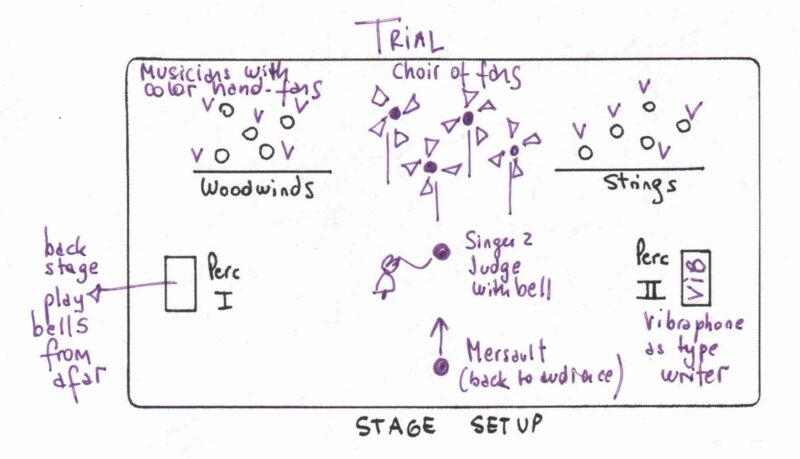
Ventilators can be switched on and off from a distance following musical cues. A whole kinetic choreography can be organized on stage synchronizing singers, instruments and objects creating a “Grand Finale”.
See “Musica invisible for flute and ventilators”, https://vimeo.com/48767850#t=14s (starts at 00:14)
Other elements from the novel present in this scene are: the bell of the judge in counterpoint to the bells from outside; there is also a vibraphone solo emulating the typist, who annotates the events of the trial.
See “Esta tarde leo a Adorno”, (vibraphone solo) https://vimeo.com/264749844
(starts at the very beginning)
L'après-midi, les grands ventilateurs brassaient toujours l'air épais de la salle et les petits éventails multicolores des jurés s'agitaient tous dans le même sens. Am Nachmittag wirbelten die großen Ventilatoren die dicke Luft im Saal durcheinander, und die kleinen, bunten Fächer der Geschworenen bewegten sich alle im gleichen Takt.
[1] See “Tissue” (minute 11 in the video – bar 147 score) to see how instruments sing/speak and play simultaneously creating “text-textures”
Musical structure
concerning L'étranger, the opera, is shown organized in several scenes which follow the structure of the novel.
The soloist, Meursault -preferably a low voice- is in counterpoint with the ensemble. We want a clear straight forward plot, easy to follow in narrative terms, so the audience can concentrate in the subtleties of music and visual design appealing to the audience own emotions and imagination.
Each section of the opera establishes a different relationship with the main character and the others in the form of solo, duos, trios, and different choral scenes. Each scene, correspond to a different “stimmung” recomposing the atmosphere by means of music, text and stage design[1].
Written polyphony
Camus’ text, creates elaborated polyphonic structures using words. The text does not attempt to organize vertically the voices the way they would be seen in a musical score, but instead tells how they are layered one upon another following a musical logic. The polyphonic structures, although expressed through words, create in Camus´ complex scenes in relation to traditional musical forms: soloist and choir, coro spezzato (Venetian choir ala Gabrielli), spread choir (ala Stockhausen in Licht), etc. “Choir” in our proposal means the confluence of instruments/objects and voices.
- The burial (Meursault + choir in circle)
- The beach (Meursault + spread choir)
- The prison, scene of the visit: (Coro spezzato)
- The love-no love duo (Meursault and Marie)
- Solo with a mirror (Mais tout le monde sait que la vie ne vaut pas la peine d'être vécue. Aber jeder weiß, daß das Leben nicht lebenswert ist).
- The trial (Meursault + compact choir as a whole)
- Marie´s visit to Meursault in prison is a brilliant example of “coro spezzato”, two opposing groups which have polyphonic correspondences. The resolution of that great quasi operatic scene has also a clear musical resolution in the novel: the voices extinguish one by one, reducing the vocal density, in a sort of structural "perdendosi".
- The scene in the beach, where the Arab man dies, starts with its characters randomly scattered in the landscape, and goes in crescendo with a musical culmination: five shots (one and four!) and “cymbals of sunlight crashing on my forehead”[2] pursuing a classical operatic climax.
Music style
- The main musical aspects of my musical perspective can be appreciated in “my musical moment”.
The music is quite atmospheric in the sense that is based in the usage of textures and extended techniques, but at the same time, is built in detail using a precise music notation. Melodies and motives come back and forth from this “sound cloud” shaping the music with total precision. - The melodic condition goes throughout the whole opera non-stop. Sometimes it is very clear (duo Marie-Meursault “Je t'aime- Je ne t'aime pas”), sometimes more vanished, but always present.
- The usage of dissonance in my music is related to the creation of textures, noise and beatments but not to a/tonal system. I appreciate both the pure singing voice, nerve and heart of the opera, and the textural techniques from noise to text. I aimed to illustrate these ideas in my musical moment.
Usage of Leitmotifs:
The novel is full of recurrent sound effects like the flute of the Arabs, the bell of the judge, the typewriter machine, the electric fans, the cymbal in Meursault´s head, etc. They create structures and climaxes by the description of the sounds but also by the repetition of the same events attending the rhythm of the prose.
One of the Arabs ". . . soufflait dans un petit roseau et répétait sans cesse . . . les trois notes qu'il obtenait de son instrument" [was blowing through a little reed over and over again . . . repeating the only three notes he could get out of his instrument] [3]
In my music, the usage leitmotivs have an extra meaning by bringing the objects themselves on stage, attending their sound evocation but also its eloquent presence: the fans are associated with the summer, the typewriter with the law, the flute with the mythical Algeria. I aimed to illustrate these ideas in my musical moment.
Singing and speaking
By “choir” I mean the confluence of instruments/objects and voices, both singing and speaking. Instruments sing, speak and play. Singers shine in a melodic arias to vanish into a textural spoken cloud.
Objects as characters
I have always been interested in writing for sound objects in combination with traditional instruments and voices. It is a fundamental part of my musical language.
Sound objects, are, in this proposal, characters in themselves, representing persons, actions or abstract philosophical instances[4].
- The typist in the trial: this character is played by one of the percussionists whose vibraphone becomes a gigantic typewriter, typing what is happening on stage in real time[5].
- Bells: The judge bell (calling to “reality”), faraway bells (the outside world, the faraway otherness)
- Uses of a choir of ventilators for the scene of the trial[6]. The electric fans represent the suffocating summer but thanks to its oscillating heads symbolize as well the mechanical shaking heads of the jury unapproving Meursault’s behavior. Some of these obejcts were included in “my musical moment”.
Collective sound effects:
The whole ensemble and singers play simple objects (paper, plastic) or performing group actions (footstep, soft murmuring) as a tutti. These actions have dramatic connotations apart from their interesting sound effect: the paper sound in the trial symbolized bureaucracy and the written laws; the undefined murmuring of voices symbolized “the others”, as a threatening and undefined whole, etc.
“The low voices of people murmuring in the prison creates a basso continuo”[7]
Music notation
Unlike Cage, philosopher of sounds, where the objects were a tool to break the academic establishment of his time, I am interested in the sounds coming from everyday objects but I consider them musical instruments. In my music chance operations are reduced. I expect precise results from the sound objects. The objects are written in the score in additional lines together with the lines of the ensemble, in a detailed "ala Lachenmann" style.
[1] See the diagrams describing the different scenes at the very end of this document.
[2] “Je ne sentais plus que les cymbales du soleil sur mon front” Albert Camus, L´étranger. Paris: Gallimard, 1942, 50.
[3] Ibid,14.
[4] See my piece “The dearest dream”, anti-concerto for simple means
[5] I wrote a piece “Heute Abend lese ich Adorno...” using this resource (available in my DVD/score at the very beginning of the piece)
[6] See my piece “Musica invisible for flute and ventilators #2 (from minute 3 in the video, page 4 in the score)
[7] Deborah Weagel, Words and Music : Camus, Beckett, Cage, Gould. New York: Peter Lang, 2010, 40.
L'étranger, evidences the strangeness of Meursault within their social environment as a metaphor of the man in relationship with society. In a dialectical relationship with the world around, the opera faces a soloist against the ambiguous world around. In our work the outside world is represented by singers, instruments and objects.
As in the novel, in our opera, Meursault carries the action. The rest of the singers have exchangeable roles (each singer represents more than one character): Maria, Celeste, Salamano and his dog, Raimundo, the lawyer, the judge, the journalist, etc. This exchange-ability of roles also represents the indeterminacy and fuzziness of the world around Meursault.
Silence is also a very important aspect in L'étranger, as a metaphor of apathy and strangeness. Our soundscape swings back and forth from an austere speechless character to polyphonic crowded scenes referring to the multitude of voices around (and inside) Meursault´s head.
A careful reading of L'étranger shows that Camus experimented with certain structures and patterns that can be affiliated with music. L'étranger can be read as a musical score: concerning the form, the novel infers a musical logic in terms of structure and motivic development. It also contains innumerable sound-effect descriptions, which, apart from their direct sound references, provide a narrative rhythm which contribute to the creation of a deep psychological atmosphere close to the ones we find in traditional operas.
The awareness of the architecture of music is significant in relation to his own ability to create music-like structures in his writing […] in relation to Bach´s art of composing particularly the aspect that emphasize complex, multilayered contrapuntal relationships.
Opera, is a perfect media to transmit philosophical concepts, because it is an art that is not beyond words, not without them, but in between words. Following Camus´ existential journey through the human condition, this proposal is not willing to describe Camus´ philosophy of absurd, but to build a Stimmung where the audience can reflect on that concept, instead of into the explanation of it. An opera can create complex and psychological landscapes, which transmitting feelings rather than intellectual statements.
The narrative of L'étranger is quite simple and can be described in few lines, thing that we will gladly do. But what brings the attention in L'étranger is the philosophical aspect that emerges from this narrative line, that turns a novel into a treatise on existentialism.
para Gabriel Abellán
Today, I began my day by reading a post on Gabriel Abellán´s blog (in Spanish), a blog devoted to physics and music under both a very smart and poetic perspective. In his latest post, Gabriel shares with us, how a logic class, taught by an inspiring teacher, changed him forever. Emphatically, I remembered my father teaching me math when I was in kindergarten.
https://labellephysique.wordpress.com/2022/05/06/logica-y-norealidad/
Science and science-fiction
From my last visit to Argentina (I live in Amsterdam) I brought a suitcase full of books: 23 kgs of precious books. I "stole" from the family bookshelf the science-fiction collection that belonged to my father. I also brought a very inexpensive (but super heavy!) collection of science books that I bought in calle Corrientes, a street in Buenos Aires, very well known for its amazing bookshops.

I am sure that the pioneers of relativity theory with their wild imagination deeply pleased Asimov and Bradbury. Wells traveling on time, and Philip Dick, with his multiple worlds, both of them speak the same language than the realities glimpsed by quantum physics scientists. In the corner of the music, Stockhausen comes to my mind too… maybe it is true that he comes from Sirius.
People from these two piles of books have in common that they could see a world beyond the everyday facts. They saw it, they believed in it, and they went for it. Each pile requires a different tool: some of them build new realities with the calculator, others with the typewriter. Just nuances.
It is easy to associate the capacity of dreaming about new realities with artists, something that scientists also do. They have to.
It is easy to associate the idea of science changing the world (I think about the discovery of electricity or the atom partition) but is something that artists also do. The world of art and the development of the human race have been spinning out together since the beginning of our times, feeding each other, making each other.
The architecture of cloth.
I also brought from Argentina in that same suitcase a pile of sewing patterns that belonged to my mum, and previously to my grandmother: a collection of Burda magazines. My grandma, Beba, taught me to sew when I was really very little. From a very early age, I could make clothes for my puppets, and for myself, following the instructions of these patterns. La abuelita Beba let me use her sewing machine, brand Singer, actuated with a pedal, that, in those times, was just at the tips of my small feet. I didn't care less about the dolls; I was more interested in the confection of these intricated mini designs with sleeves, zippers and pliers. Believe me, still not easy. I was also, amazed by the mechanism of the sewing machine. I still am.
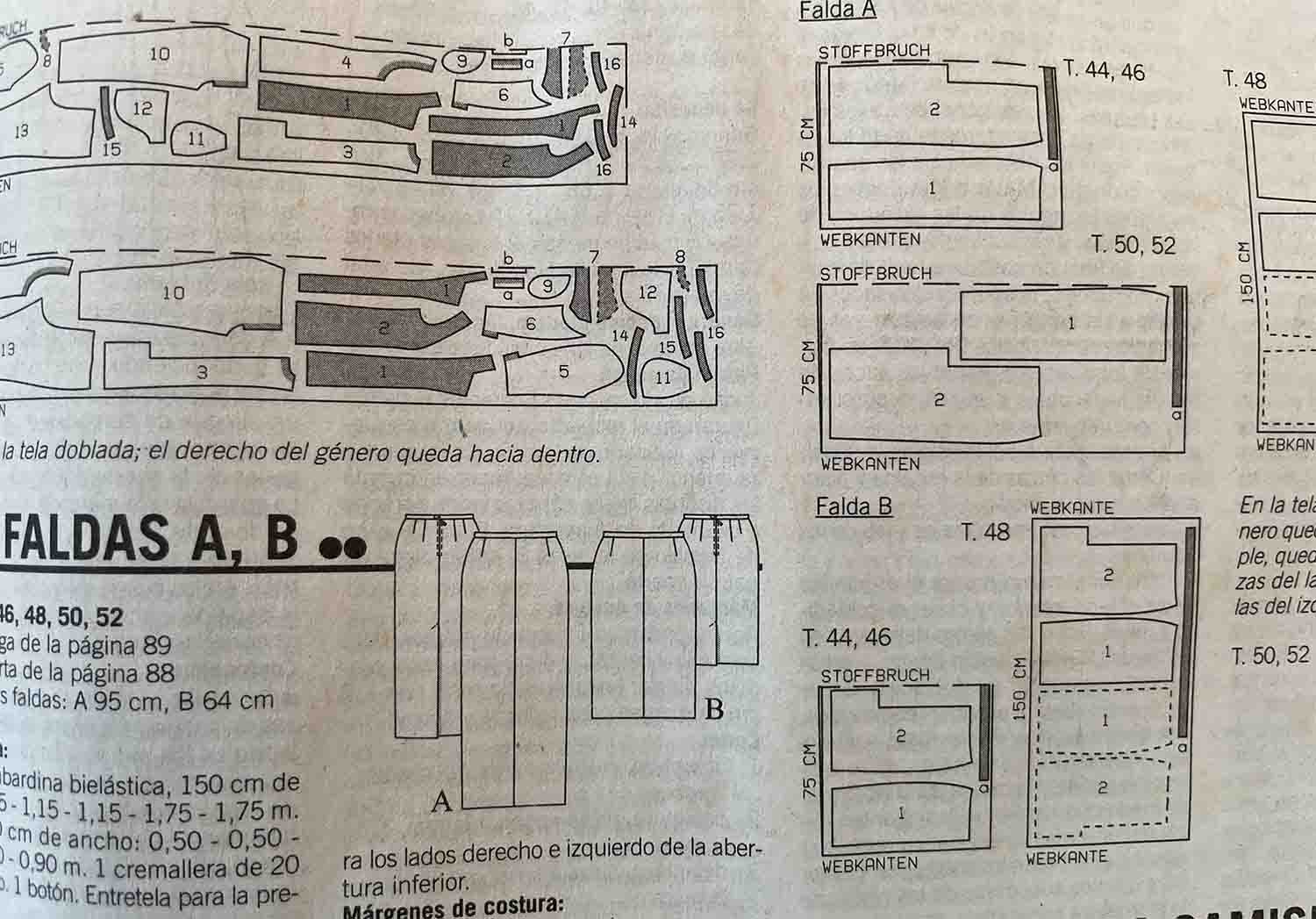
Now I am writing scores, with instructions, sometimes in several languages, like in Burda magazine!
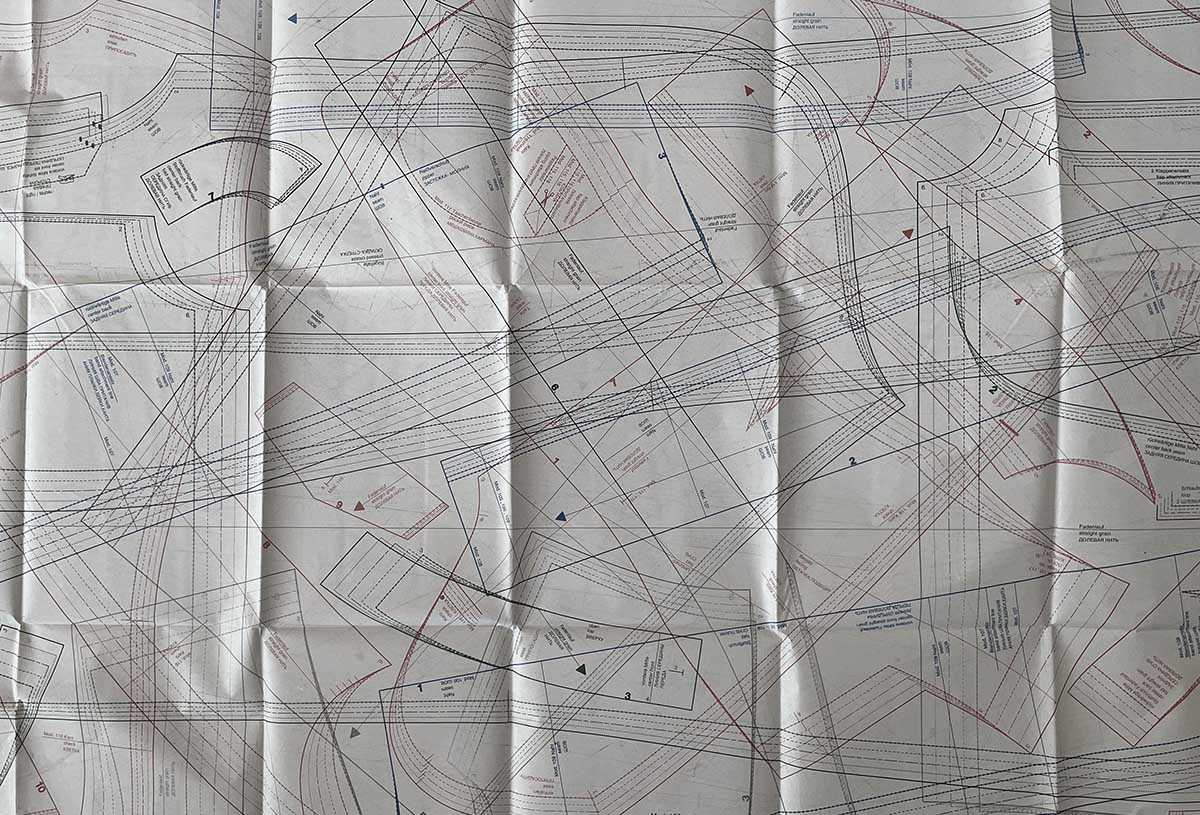
Varese said that music is organized sound.
I say that music is the art to combine… a lot of things.
Cheers!
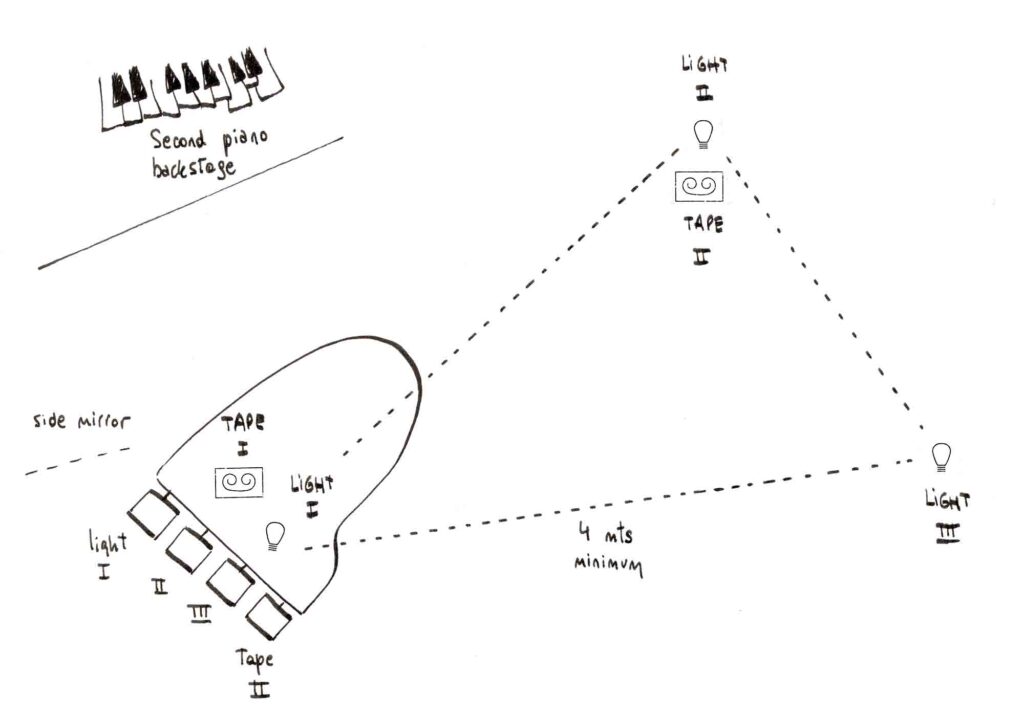
My recent piece Boxes belongs to a collection of pieces under the name “Acoustics of everyday” focused on explicit issues related to classical acoustic: resonance boxes, strings, mutes, filters, microtonality, and other subjects to come.
I had a wonderful adventure with ensemble Modelo62, which included 3 concerts + a recording session, plus shared rehearsal time. In all those instances I could deepen my questions about this new chapter in my music.
Boxes is mainly focused on the subject of space. Different resonance boxes are in dialogue between themselves, but also, in dialogue with the big box around that is the room itself.
In a series of concentric layers, my first concern about space starts with the same architecture of the piece.
How?
 1. Composing different spaces within the piece by grouping instruments by color and/or behavior (orchestration).
1. Composing different spaces within the piece by grouping instruments by color and/or behavior (orchestration).
2. Establishing the role of the instruments (solo, tutti, ensemble)
3. Composing their interaction in a combo music/space (soloist, duplications, hoquetus, etc)
4. Boxes ask what is sounding, when, and where at the same time.
 5. Choosing the musical materials both in terms of time and space: repeated notes freeze the time, while ever looping scales move the time in circles; repeated notes made by one instrument “freeze the space” while the hoquetus form opens it.
5. Choosing the musical materials both in terms of time and space: repeated notes freeze the time, while ever looping scales move the time in circles; repeated notes made by one instrument “freeze the space” while the hoquetus form opens it.
6. Proposing the question of what sounds inside or outside.
7. Handles and metal appliances of the boxes were reacting to some frequencies of the guitar amps located inside. Finally, the boxes were singing on stage beyond being only resonance containers!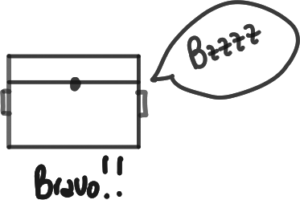
The music as a holistic unity brings together different purposes, perspectives, and a multiplicity of diverse energies into one and only one perceptual experience, into one logic.
Space is experienced as an unconscious unity rather than as a collection of recognizably separable processes.
Spaces speak, are you listening?
B. Blesser and L.R. Salter
Post-concert questions.
- How concrete is the space of the piece in terms of composition? And how is the dialogue with the architectonic space of the concert hall?
- How aware are the listeners of space? Is it possible to design a space that is moving instead of sound events traveling in it? Therefore: how to differentiate the movement of the events rather than the movement of the space itself?
- How much should be seen? The visual aspect of a concert is always very influential. In previous works, I used the visual aspects of a concert as part of the music (music to see). But in Boxes, on the other hand, I was longing for a concert hall in the shadows.
To be continued.
A cheese grater is being played with a toothbrush. After a while, we completely forget the cheese grater and we can focus only on the sound. The continuous fricative noise is colored by mini sparks of high frequencies, short and loud.
That sound progressively becomes a ghost, a bunch of confused energy not attached to a specific physical body. The sonic outcome is different from the sounds produced by the object when in the kitchen. The grater-thing, as a lost map, with its metallic perimeter, embrace new sounds floating in the sea of abstraction.
Deep listening is in conflict with what the eyes and/or the ears have to offer: is it really a cheese grater or a camouflaged synthesizer? It is known that synthesizers can efficiently produce a broad variety of sounds, they may also change the way they look,
“not what it sounds, the car, the instrument, the voice, but what sounds as sonic materiality and sense”
S.Voegelin
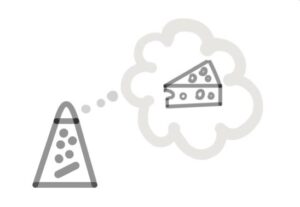 I like the conflict that the grater brings on stage when not performing “spaguetti” but the most beautiful sounds ever.
I like the conflict that the grater brings on stage when not performing “spaguetti” but the most beautiful sounds ever.
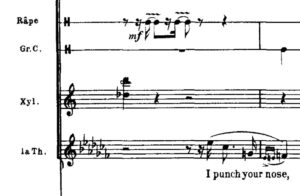 La râpe à fromage doit être frottée avec un baguette de Triangle/
La râpe à fromage doit être frottée avec un baguette de Triangle/
The cheese grater should be rubbed with a Triangle mallet
M. Ravel , L'Enfant et les Sortiléges
Musique concrète makes music with second-hand objects, mostly bought in the markets or rescued from the trash. Two performers manipulate sound objects and slide-projectors in different spots of a dark room, producing performative installations in dialogue with the architecture of the space. Music, sound, and space design are organized in a score creating complete audiovisual scenes with simple means.
link to Musique concrète - project page